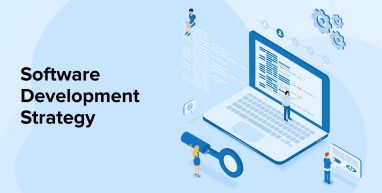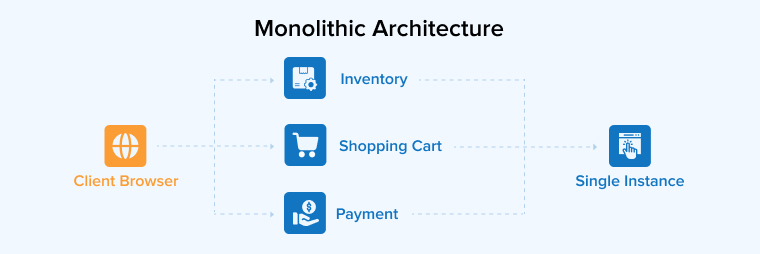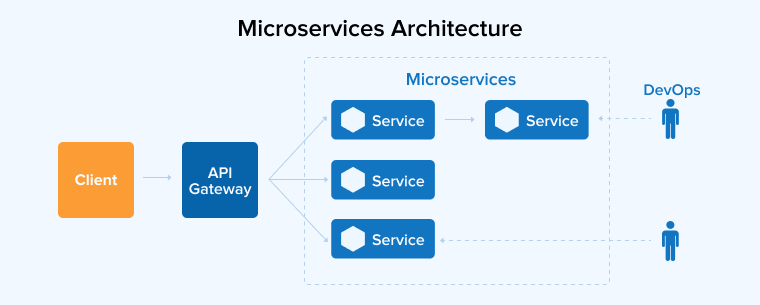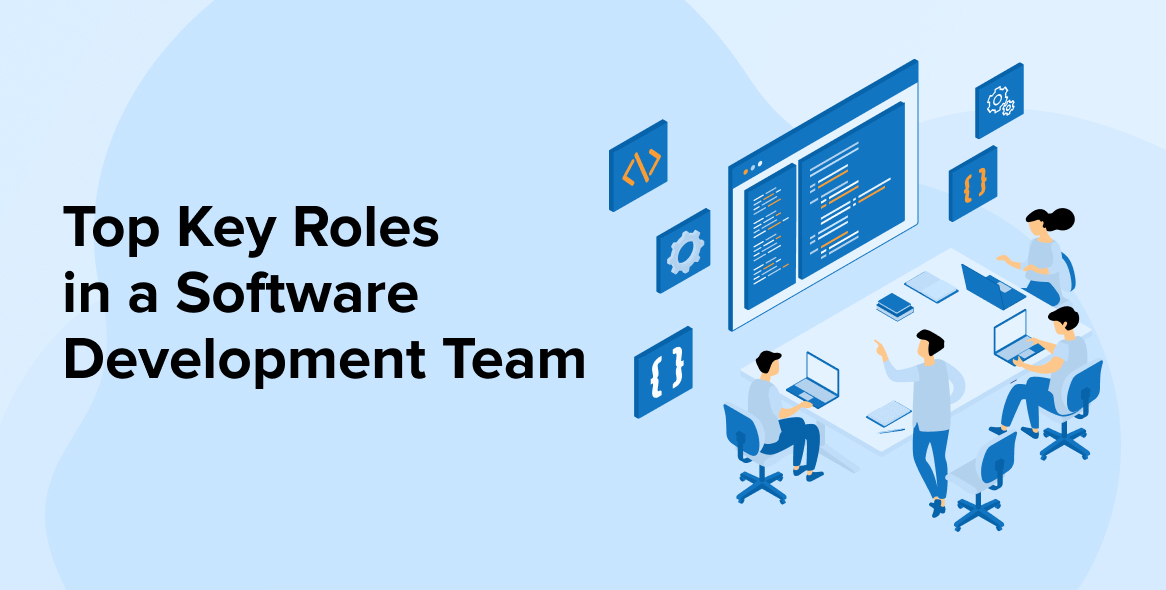
1. What is Software Development Strategy?
Software development strategy is a planned and systematic action taken with the goal of fulfilling an idea, plan, or objective of software development solutions. It includes a detailed strategy that facilitates rapid product development at every stage from requirements collecting through market launch. In accordance with corporate strategy, the software development process varies based on whether a brand-new product is being developed or if improvements are being made to an existing product.
Below are some of the best strategies that will lead you to a successful software development outcome.
2. 11 Strategies for Software Development
Following are the 11 strategies for software development:
2.1 Introduce an MVP First
Similar to how prioritizing features work, MVP development begins with the release of a stripped-down yet functional version of the product. There are several advantages to developing an MVP, particularly for new businesses, beyond the obvious time and money savings. You may put your monetization plan to the test, get valuable customer feedback, and iteratively improve the product based on what you learn from these experiments.
2.2 Consider Architecture Type
One must first decide on the software’s architecture before one can formulate a plan that will result in the creation of an application that is effective.
The architecture of a software program determines how its components will be developed and linked together.
There are now two main types of architecture that programmers utilize when creating new programs.
2.2.1 Monolith Architecture

If you ask the average developer to picture the structure of an app, they would probably see a monolithic software architecture. A monolithic application is one in which all of the features and services are built at once, using the same technology stack.
Working together is crucial since updating one service might negatively affect the performance of the whole application.
2.2.2 Microservice Architecture

The creation of a microservice-based architecture necessitates a new strategy. Functional components of an application are built independently yet with the ability to ‘communicate’ with one another.
The ability to easily integrate new services and features into existing software without requiring a complete rewrite has pushed microservices adoption to the forefront of many developing communities.
Further Reading on Monolithic vs Microservices Architecture
2.3 Choose the Right Technology Platform
The disparity in development pace might be anywhere from two to twenty times, making the choice of technological platform (which includes not just the language but also platforms, designs, APIs, and more) crucial. However, there can be notable variations in platform dependability. It’s suggested by the experts to utilize a 4-quadrant matrix to compare and contrast the available platforms based on these two criteria.
- Also, maintain backward compatibility with the existing technology stack (if any) in use inside your enterprise’s IT infrastructure or product family.
- Think about how much it will cost to maintain the chosen technology platform over time, as well as how well it will respond to issues and how often updates are released.
2.4 Utilize Modern Development Tools and Methodologies
It is crucial to implement appropriate methods and resources. There are a plethora of software development tools out there, and they all serve the same objective: to streamline your operations and make you more productive.
Agile, Scrum, and Kanban are just a few examples of project management approaches you might use. You may finish the assignment faster and more effectively with their assistance. Linkers, compilers, code editors, GUI designers, assemblers, debuggers, and performance analysis tools are just some of the many other useful software development tools available. Each of these tools has a unique purpose in the software development lifecycle, allowing you to streamline and quicken the process at various points.
Some examples are as follows:
- ClickUp, BackLog, MantisBT, and Marker.io are all examples of bug-tracking software.
- Assembla, IntelliJ, GitHub, GitLab, Mercurial, Kiuwan, and Storm are all examples of code management tools.
- The Silver Searcher and Codase are two examples of code-searching tools.
- Tools for organizing and completing projects include Monday.com, Trello, Jira, Asana, and Wrike.
- Communication and coordination apps for groups, such as Slack, Trello, ClickUp, and Microsoft Teams.
- Time tracking tools, such as Hubstaff or Jibble.
Pick your equipment in accordance with the tasks at hand. Keep in mind that any of these options will help you out and ultimately result in a better product.
2.5 Design Before Coding
The quality of the code produced is profoundly affected by the amount of time spent on planning. Before beginning development on a new feature, the whole development team should collaborate on software development design and research. This tweet perfectly explains the importance of software design.

There is a wide variety of design patterns and technologies available, so exploring the many possibilities can help your team come up with the optimal strategy. There will be a lot of lost time if you code before you design. It is possible, though unlikely, that the software you design may turn out to be a poor choice and need you to start over.
2.6 Apply Automation
Incorporating automation into the design, testing, and implementation phases of the workflow will also enhance the operation. The following are examples of important automated tools and procedures:
- Containerization – When compared to virtual machines, containers are much more efficient. To facilitate the deployment and maintenance of big, complicated systems, they partition all operational files and software libraries.
- Robotic Testing – Standardizing test planning, design, development, and the automation of test execution is what we mean when we talk about test automation.
- DevOps – By coordinating the development, testing, and production phases, the DevOps methodology and techniques, such as continuous integration and delivery (CI/CD), allow for more frequent and stable software releases.
DevOps (a shortened form of “development” and “operations”) is a software development approach that focuses on increasing collaboration and communication between developers and IT operations staff.
— Postman (@getpostman) April 24, 2023
2.7 Controlled Deviations from Defined Requirement
Managing various cycles, editions, updates, products, and platforms may be difficult when several developers engage in software development; these developers may be part of separate teams or even be located in different physical places. Without methodical oversight, the creation procedure degenerates into anarchy.
That’s why it’s crucial to have consistent management practices for developer and team assets. Managers of complex projects may now more accurately allocate resources in light of the project’s most pressing needs. Changes can be tracked with more ease, allowing for more proactive issue detection and resolution. Establishing a stable, tested baseline at the end of each iteration will aid in the coordination and management of software releases, releases will be easier to trace, and the impact of change can be actively balanced.
2.8 Break Up the Deliverables
Iteratively dividing the deliverables has shown to be the most effective approach. Get started with an acceptable, release-ready, and high-quality bare-bones set of features. By doing so, you already help in a couple of ways by delivering something “sooner,”. Also, you reduce the amount of time it takes to construct the entire set of functionalities according to assumptions.
2.9 Groom Your Backlog
Maintaining project order requires that you regularly clear your backlog. Without intervention, your backlog will continue to expand. Frustration will rise when the procedure grinds to a halt due to a big backlog.
What are your options?
- Put the Most Vital Things First.
- Remove Anything of Little Use.
- Merge items that are similar.
The benefits of a well-managed backlog are numerous. Your team will be able to produce features more quickly, and the project as a whole will go more smoothly.
Backlogs prompt debates and choices that keep a program healthy–not everything can be top priority. – Atlassian
2.10 Update, Release and Repeat
Don’t just sit back and hope for the best as the development team writes and tests your product. An initial version, or minimum viable product (MVP), can be released, and further updates can be made. There are flaws in every single piece of software.
When working with countless lines of code, this is bound to occur. But if the team can iron out the kinks and roll out a better version of themselves, that speaks volumes about the quality of your product.
The audience gets the impression that you care about their convenience and are willing to go the extra mile to meet their needs. Putting out updates and new versions shows that you care about what your consumers want.
2.11 Consider Software Maintenance Beforehand
Software maintenance is an issue that is often overlooked by programmers. Nonetheless, it is a crucial procedure for any reliable enterprise software development firm.
Businesses must maintain software success by constantly updating and bettering the program to decrease degradation and increase user satisfaction. Maintaining the product’s integrity and health is just as important as making it.
Planning is essential for software maintenance. When the initial public release is ready for widespread use, businesses should begin the process of keeping it updated. Getting early input is advantageous since it gives you a head start on knowing what to fix.
3. Conclusion
The end goal of any software development procedure should be to provide a product that is both functional and up to par with the specifications. The odds of creating a high-quality software product go up when you adhere to and apply these tactics.
Time-to-market estimates and the occurrence of coding and other development errors become more reliable and more standardized and effective in the development process.
Businesses may easily generate high-quality software solutions by adhering to the aforementioned best software development strategies. They streamline the process and allow for more cost-effective construction.
TatvaSoft is your go-to agile software development team if you’re in need of specialists for quality software development project in accordance with industry standards. We are a software development company that maintains industry standards by employing highly skilled programmers who adhere to tried-and-true procedures.






Comments
Leave a message...